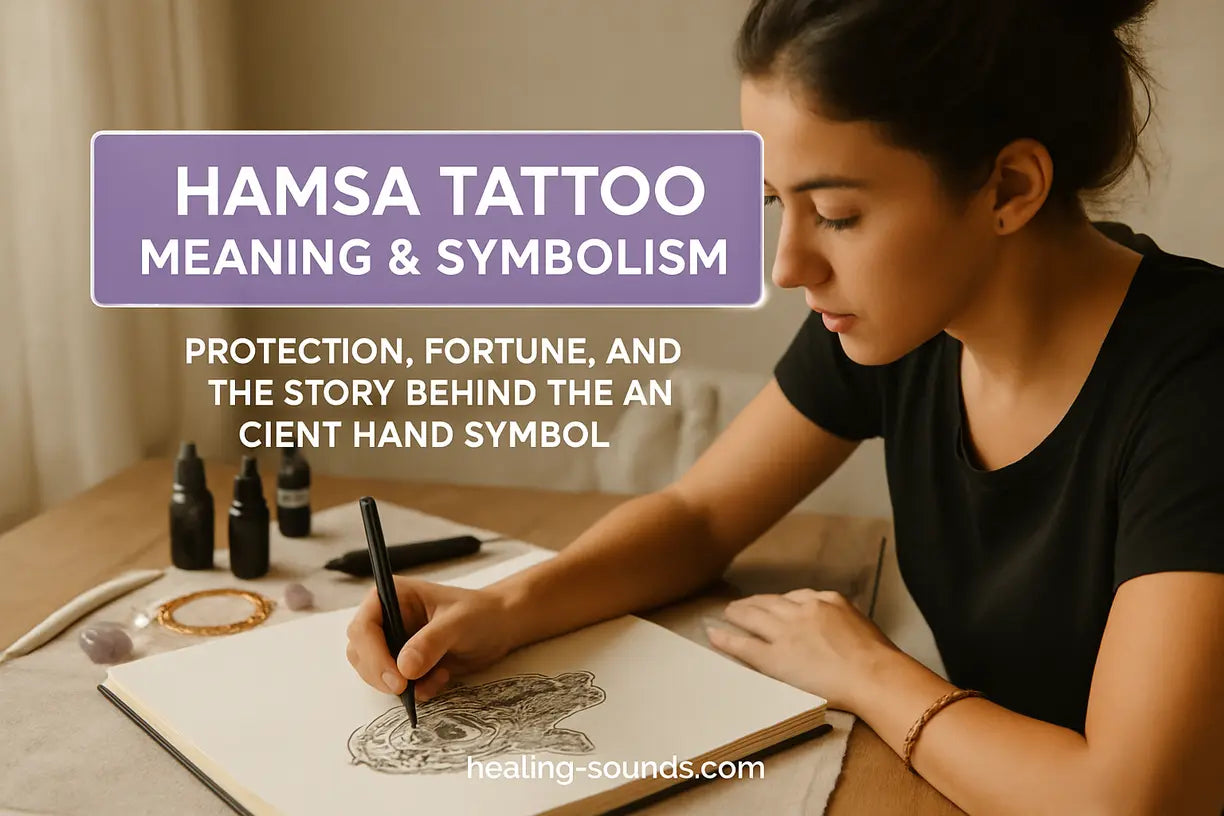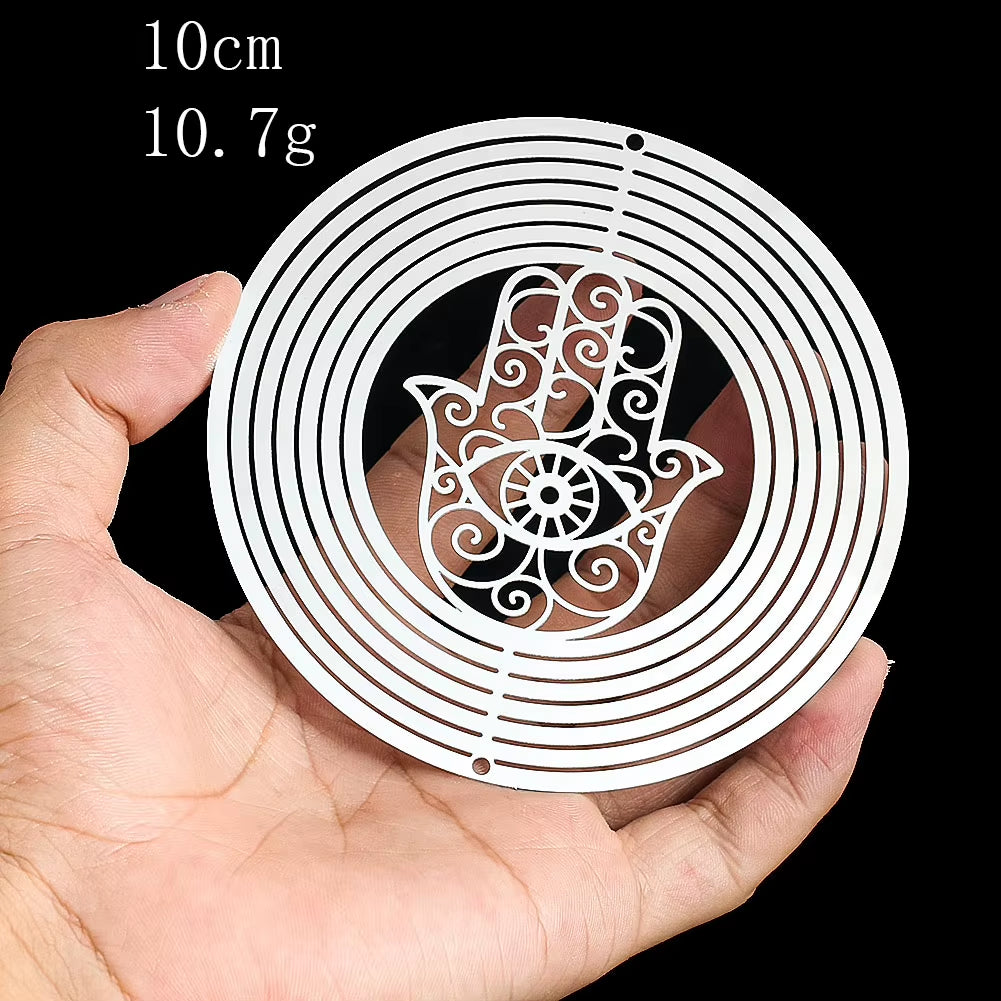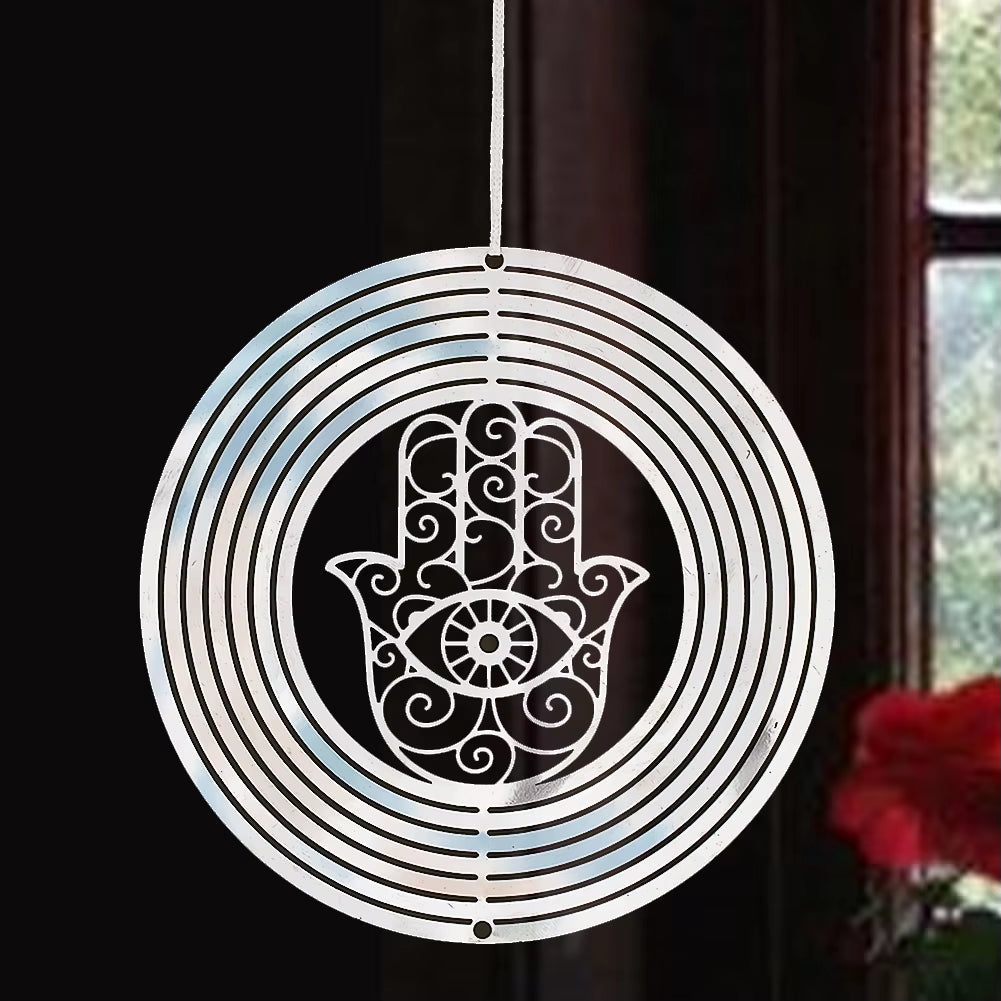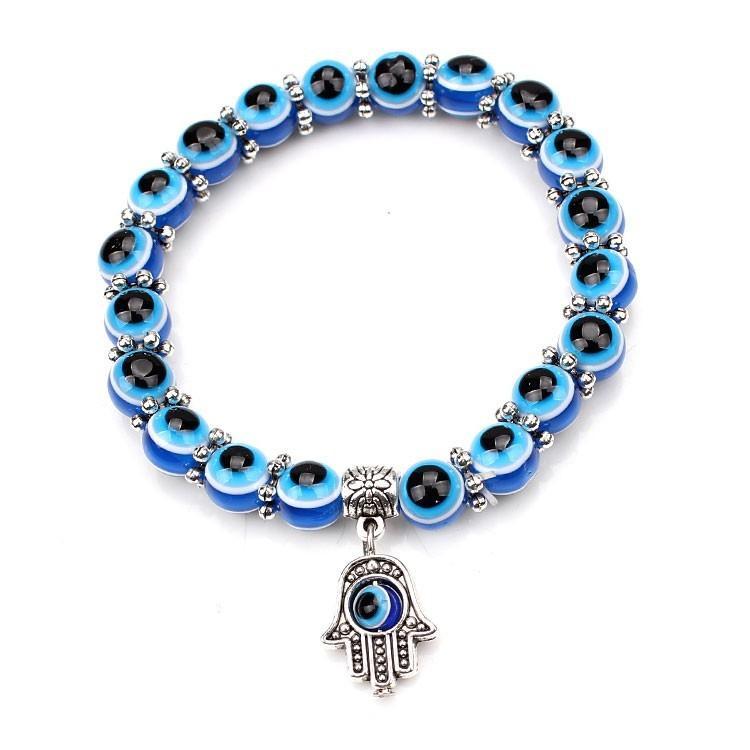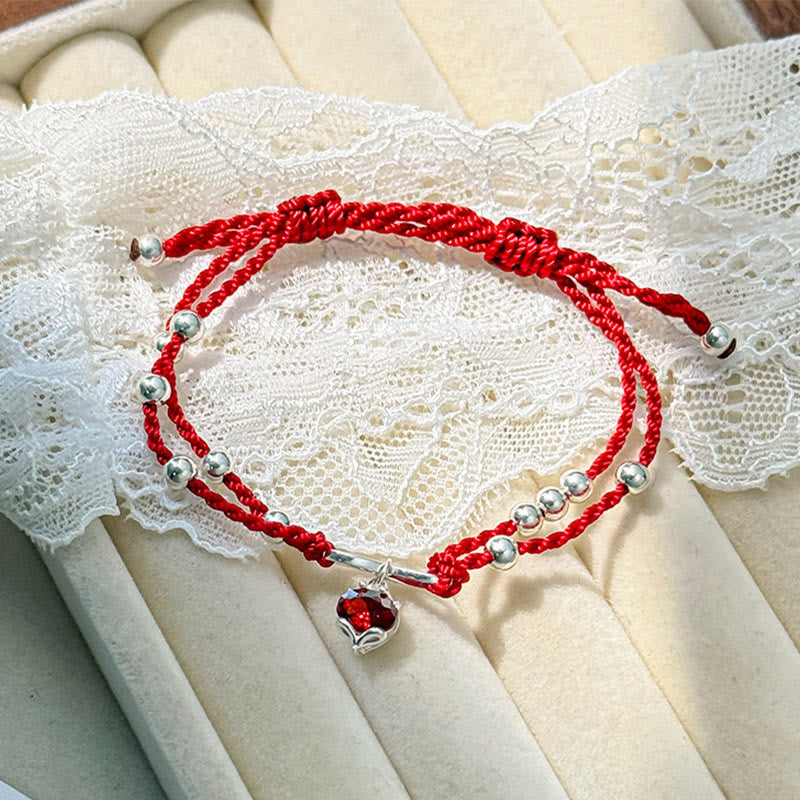Der Reiz eines Tattoos liegt oft nicht nur in seiner Ästhetik, sondern auch in der tieferen Geschichte, die es erzählt. Für diejenigen, die sich zu Symbolen des Schutzes, der Spiritualität und der alten Weisheit hingezogen fühlen, ist die Hamsa-Hand ein kraftvolles Symbol. Das Verständnis der Bedeutung des Hamsa-Tattoos ist entscheidend, um seine anhaltende Bedeutung über Kulturen und Jahrhunderte hinweg zu verstehen. Dieser Artikel befasst sich mit der reichen Symbolik, den historischen Wurzeln und den spirituellen Interpretationen des Hamsa-Tattoos und hilft Ihnen, seine tiefe Botschaft zu verstehen, egal ob Sie sich für dieses Tattoo interessieren oder einfach nur neugierig auf seine Kraft sind.
Was ist die Hamsa-Hand? Ein Blick auf ihre antiken Ursprünge
Die Hamsa, auch als Khamsa bekannt, ist ein altes Amulett aus dem Nahen Osten, das die Hand Gottes symbolisiert. Sie ist in allen Glaubensrichtungen ein Schutzzeichen und soll ihrem Besitzer Glück, Gesundheit und Wohlstand bringen. Das Wort „Hamsa“ leitet sich vom semitischen Wortstamm für „fünf“ ab und bezieht sich auf die fünf Finger der Hand. Während sein genauer Ursprung umstritten ist, ist seine Präsenz in verschiedenen Kulturen bemerkenswert, darunter in jüdischen, islamischen und christlichen Traditionen sowie in alten mesopotamischen Zivilisationen. Die anhaltende Anziehungskraft der Hamsa liegt in ihrer universellen Botschaft der Abwehr von Negativität und der Herbeiführung von Segen. Ihre komplizierten Designs enthalten oft ein Auge, was ihre schützenden Eigenschaften weiter verstärkt und ein zentrales Thema in der Bedeutung des Hamsa-Handtattoos ist .
Die spirituelle Bedeutung des Hamsa-Tattoos
Die Entscheidung für ein Hamsa-Tattoo ist oft eine sehr persönliche Entscheidung und spiegelt den Wunsch nach spiritueller Verbundenheit und Schutz wider. Die Bedeutung eines Hamsa-Tattoos ist vielfältig und umfasst im Allgemeinen Schutz vor dem bösen Blick, die Anziehung positiver Energie und die Gewährung von Segen. Es gilt als Talisman, der den Träger vor Schaden und Unglück schützt und gleichzeitig göttliche Präsenz und Führung repräsentiert. Viele glauben, dass ein Hamsa-Tattoo als ständige Erinnerung an die eigene innere Stärke und die Verbindung zu einer höheren Macht dienen kann.

Die Bedeutung des Auges in der Hamsa
Ein häufiges Merkmal von Hamsa-Designs und somit auch vieler Hamsa-Tattoos ist ein Auge. Es wird oft als Horusauge (Wadjet) oder als Symbol des bösen Blicks interpretiert, das böse Blicke und negative Energie abwehren soll. Man glaubt, dass das Auge alles sieht und unerschütterlichen Schutz bietet. Die Präsenz des Auges in einem Hamsa-Tattoo verstärkt dessen schützende spirituelle Bedeutung erheblich und fungiert als wachsamer Wächter für den Träger. Es ist ein kraftvolles Statement gegen unsichtbare negative Kräfte und vermittelt ein Gefühl von Sicherheit und Frieden.
Ist es wichtig, ob die Hamsa oben oder unten ist?
Auch die Ausrichtung der Hamsa-Hand in einem Tattoo kann verschiedene Bedeutungsnuancen haben. Wenn die Hamsa-Hand nach oben zeigt (die Finger zeigen zum Himmel) , wird sie in erster Linie als universelles Zeichen gegen das Böse gesehen. Sie ist ein Symbol für Schutz, Stärke und Kraft und soll Negativität abwehren und den Träger beschützen. Wenn die Hamsa-Hand hingegen nach unten zeigt (die Finger zeigen zur Erde) , wird sie oft als Symbol für Überfluss, Segen und die Aufnahme von Güte in das eigene Leben interpretiert. Sie kann auch Fruchtbarkeit und erhörte Gebete symbolisieren. Die Wahl der Ausrichtung ist persönlich und spiegelt wider, welcher Aspekt der Hamsa-Symbolik bei der Person am meisten Anklang findet.
Wichtige Erkenntnisse: Hamsa-Orientierung
- Hamsa Up: Schutz vor dem Bösen, Abwehr von Negativität, Stärke.
- Hamsa Down: Überfluss, Segen, Fruchtbarkeit, willkommenes Glück.
Kulturelle Wurzeln der Hamsa
Die reiche Geschichte der Hamsa ist mit verschiedenen Kulturen und Religionen verwoben. Im Judentum ist sie als Hand von Miriam, der Schwester von Moses und Aaron, bekannt und symbolisiert Schutz und die fünf Bücher der Thora. Im Islam wird sie oft als Hand der Fatima bezeichnet, benannt nach der Tochter des Propheten Mohammed, und steht für Geduld, Glauben und die fünf Säulen des Islam. Außerhalb dieser abrahamitischen Religionen wurde das Symbol in antiken Artefakten im gesamten Nahen Osten und Nordafrika gefunden, was auf vormonotheistische Ursprünge hindeutet. Das Verständnis dieser unterschiedlichen kulturellen Perspektiven verleiht der Bedeutung der Hamsa-Tattoos Tiefe und unterstreicht ihre universelle Anziehungskraft als Symbol göttlicher Vorsehung und Beschützens. Für weitere Informationen zu ihrer weit verbreiteten Symbolik bieten Quellen wie Britannicas Erklärung des Bösen Blicks wertvolle Einblicke in damit verbundene Schutzglauben.
Ist es in Ordnung, sich ein Hamsa-Tattoo stechen zu lassen? Umgang mit kultureller Sensibilität
Angesichts ihrer tiefen religiösen und kulturellen Bedeutung fragen sich manche vielleicht, ob ein Hamsa-Tattoo angebracht ist. Die Hamsa gilt allgemein als Symbol für Schutz und Wohlwollen. Wie bei jedem Symbol mit einer langen kulturellen und spirituellen Geschichte ist es jedoch wichtig, ihr mit Respekt und Verständnis zu begegnen. Sich über die Bedeutung und Herkunft des Hamsa-Handtattoos zu informieren, ist ein guter erster Schritt. Wenn Sie ein Hamsa-Tattoo in Erwägung ziehen, denken Sie über Ihre persönliche Verbindung zu seiner Symbolik nach und stellen Sie sicher, dass Ihre Absicht eher Wertschätzung als Aneignung ist. Die Wahl eines Designs, das mit seiner traditionellen Bedeutung in Einklang steht, kann auch Respekt für sein Erbe zeigen.

Mehr als Tinte: Die Hamsa im modernen Leben, in der Dekoration und im Schmuck
Die schützende und positive Symbolik der Hamsa geht weit über Tätowierungen hinaus. Sie ist ein beliebtes Motiv in Schmuck, Wohndeko und Kunst und ermöglicht es Menschen, ihre wohltuende Energie in verschiedenen Formen zu tragen oder zu zeigen. Von kunstvollen Halsketten bis hin zu wunderschön gearbeiteten Wandbehängen dient die Hamsa als ständige Erinnerung an Hoffnung, Schutz und Segen. Die Integration von Hamsa-Gegenständen in Ihr Leben kann eine wunderbare Möglichkeit sein, ihre positive Symbolik zu nutzen, indem sie die persönliche Aussage eines Tattoos ergänzt oder als eigenständiges Symbol spiritueller Verbundenheit dient.
3D-Windspiel-Amulett aus Edelstahl für den Garten
$22.90 $29.90
Bringen Sie mit diesem kunstvollen Windspiel-Amulett die schützende Energie der Hamsa-Hand in Ihr Haus oder Ihren Garten.
Produkt entdeckenViele Menschen empfinden das Tragen von Hamsa-Schmuck oder das Platzieren von Hamsa-Symbolen in ihrer Umgebung als wohltuend und stärken die Verbindung zu den schützenden Eigenschaften des Symbols. Ob dezenter Anhänger oder auffälliges Kunstwerk – die Hamsa ist nach wie vor ein geschätztes Symbol spiritueller Stärke.

Entdecken Sie Schutzamulette und Schmuck
$29.99
$39.99
Tragen Sie dieses Hamsa-Armband mit dem bösen Blick für täglichen Schutz, positive Energie und eine stilvolle Anspielung auf symbolische Tattoos. Mehr erfahren ➔
$35.90
$51.90
Bringen Sie Harmonie und Schutz mit diesem symbolischen Armband aus roter Schnur ins Spiel – eine elegante Anspielung auf Amulette und spirituelle Bedeutung. Mehr erfahren ➔
Ein Hinweis zur kulturellen Wertschätzung:
Wenn Sie Symbole wie die Hamsa tragen oder zeigen, ist es immer hilfreich, ihre Herkunft und Bedeutung zu verstehen. Dies fördert eine tiefere Verbundenheit und Respekt für die Kulturen, aus denen sie stammen. Um mehr über die Hamsa in der jüdischen Tradition zu erfahren, können Sie Ressourcen wie die Jüdische Virtuelle Bibliothek nutzen.
Fazit: Umfassen Sie die Symbolik
Die Bedeutung des Hamsa-Tattoos ist ein reiches Geflecht aus Fäden antiker Geschichte, verschiedener Kulturen und tiefer spiritueller Überzeugungen. Ob Sie sich von seinen schützenden Kräften, seinem Segensversprechen oder seiner Darstellung göttlicher Verbundenheit angezogen fühlen – ein Hamsa-Tattoo ist ein zutiefst persönliches Symbol. Wenn Sie seine Symbolik verstehen, können Sie dieses uralte Amulett mit Bedacht und Ehrfurcht tragen. Bei Healing Sounds ermutigen wir Sie, Symbole zu entdecken, die Ihren Geist berühren, und die Hamsa-Hand steht zweifellos für dauerhafte Kraft und Schönheit. Ergänzen Sie Ihre Reise mit symbolischen Schmuckstücken, die diese uralten Schutz- und Segenssymbole widerspiegeln.
Häufig gestellte Fragen zur Bedeutung von Hamsa-Tattoos
Ja, es ist grundsätzlich in Ordnung, sich ein Hamsa-Tattoo stechen zu lassen. Es ist ein weithin anerkanntes Symbol für Schutz und Glück. Es ist jedoch wichtig, seine kulturelle und spirituelle Bedeutung zu verstehen und ihm mit Respekt zu begegnen. Wenn Sie die Bedeutung der Hamsa in verschiedenen Traditionen kennen, können Sie das Symbol mit Bedacht tragen.
Ja, es gilt allgemein als angemessen, eine Hamsa zu tragen, sei es als Schmuck, Tattoo oder in anderer Form. Sie gilt in vielen Kulturen als positives Symbol. Wichtig ist , sie mit Respekt und Verständnis für ihre historische und spirituelle Bedeutung als Schutzamulett zu tragen .
Die spirituelle Bedeutung der Hamsa dreht sich um Schutz, Segen und Stärke . Sie soll den bösen Blick und negative Energie abwehren und dem Träger Glück, Gesundheit und Wohlstand bringen. Sie symbolisiert auch göttliche Präsenz und Führung.
Ja, die Ausrichtung kann leicht unterschiedliche symbolische Bedeutungen haben. Eine Hamsa mit nach oben zeigenden Fingern wird allgemein als Zeichen des Schutzes vor dem Bösen gesehen . Zeigen die Finger nach unten, symbolisiert dies oft Überfluss, Segen und die Aufnahme guter Dinge in das eigene Leben. Die Wahl hängt von der jeweiligen Absicht des Trägers ab.
Das Auge, das oft in der Handfläche der Hamsa abgebildet ist, ist typischerweise ein Symbol des bösen Blicks oder des Horus . Seine Aufgabe ist es, vor böswilligen Blicken und negativer Energie zu schützen. Es fungiert als wachsamer Beobachter, wehrt Schaden ab und verstärkt die allgemeinen Schutzeigenschaften der Hamsa.

